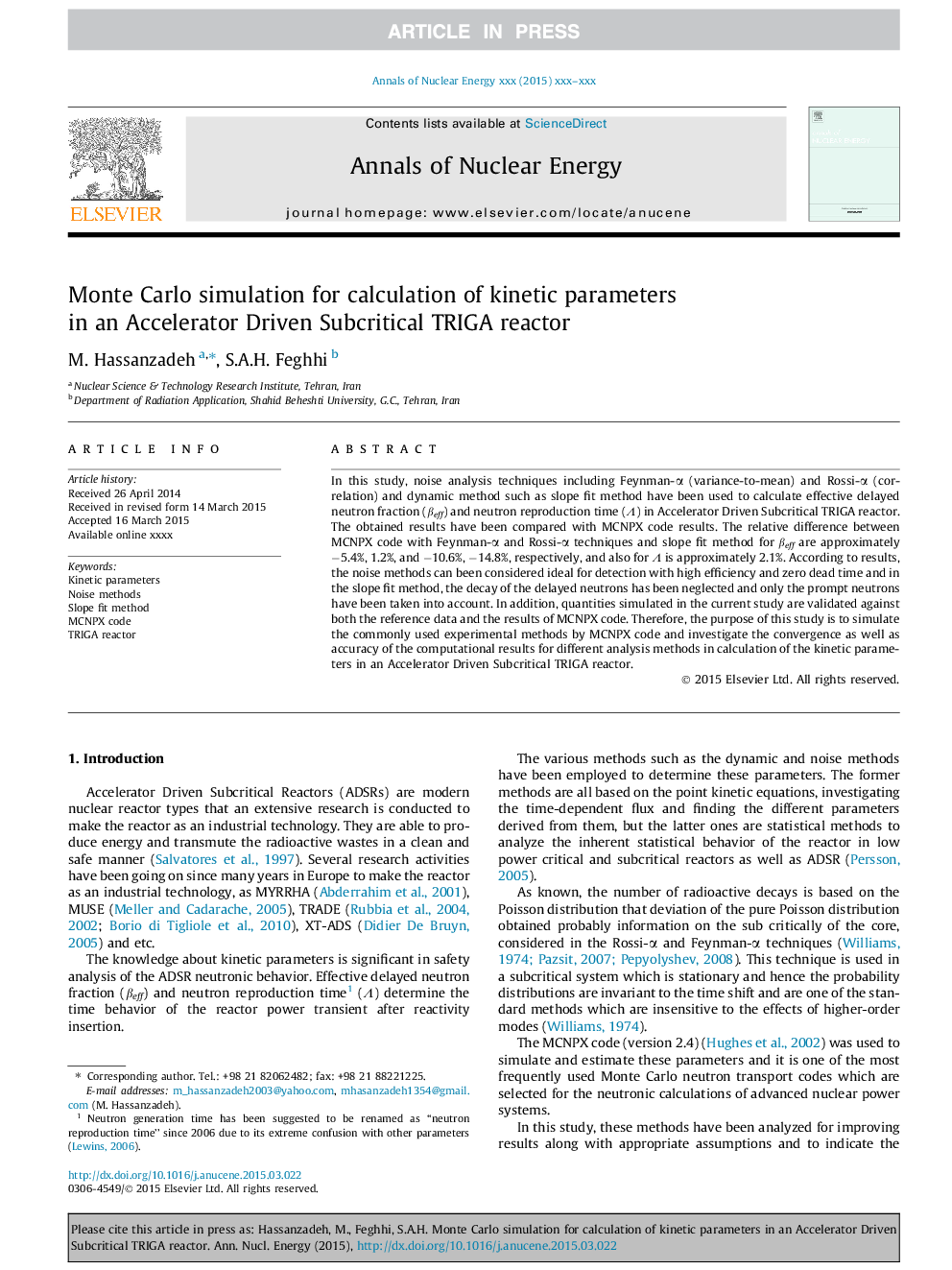| Article ID | Journal | Published Year | Pages | File Type |
|---|---|---|---|---|
| 8068476 | Annals of Nuclear Energy | 2015 | 6 Pages |
Abstract
In this study, noise analysis techniques including Feynman-α (variance-to-mean) and Rossi-α (correlation) and dynamic method such as slope fit method have been used to calculate effective delayed neutron fraction (βeff) and neutron reproduction time (Î) in Accelerator Driven Subcritical TRIGA reactor. The obtained results have been compared with MCNPX code results. The relative difference between MCNPX code with Feynman-α and Rossi-α techniques and slope fit method for βeff are approximately â5.4%, 1.2%, and â10.6%, â14.8%, respectively, and also for Î is approximately 2.1%. According to results, the noise methods can been considered ideal for detection with high efficiency and zero dead time and in the slope fit method, the decay of the delayed neutrons has been neglected and only the prompt neutrons have been taken into account. In addition, quantities simulated in the current study are validated against both the reference data and the results of MCNPX code. Therefore, the purpose of this study is to simulate the commonly used experimental methods by MCNPX code and investigate the convergence as well as accuracy of the computational results for different analysis methods in calculation of the kinetic parameters in an Accelerator Driven Subcritical TRIGA reactor.
Related Topics
Physical Sciences and Engineering
Energy
Energy Engineering and Power Technology
Authors
M. Hassanzadeh, S.A.H. Feghhi,
